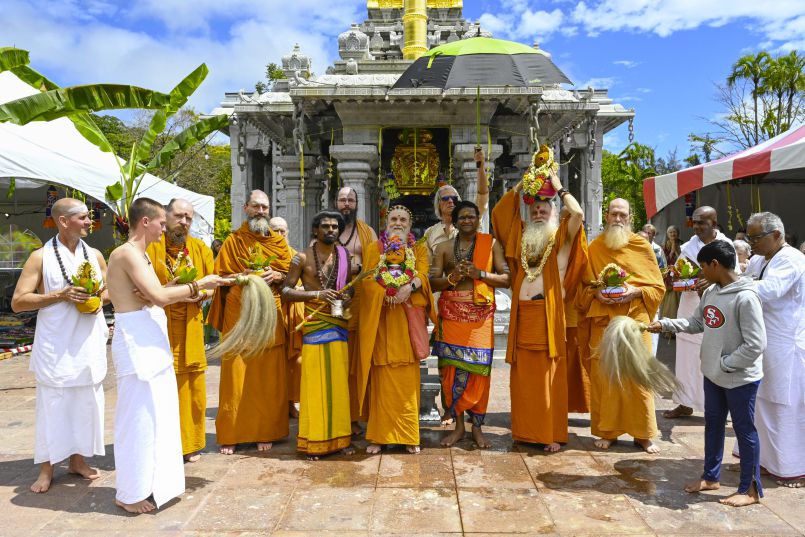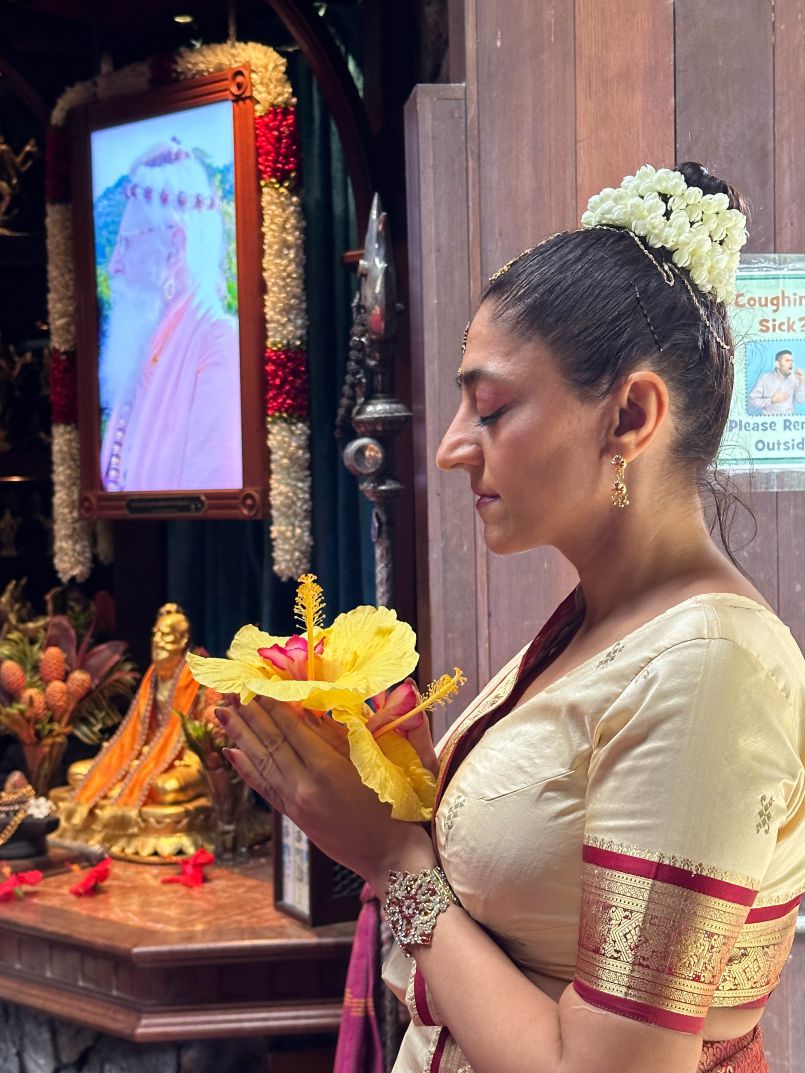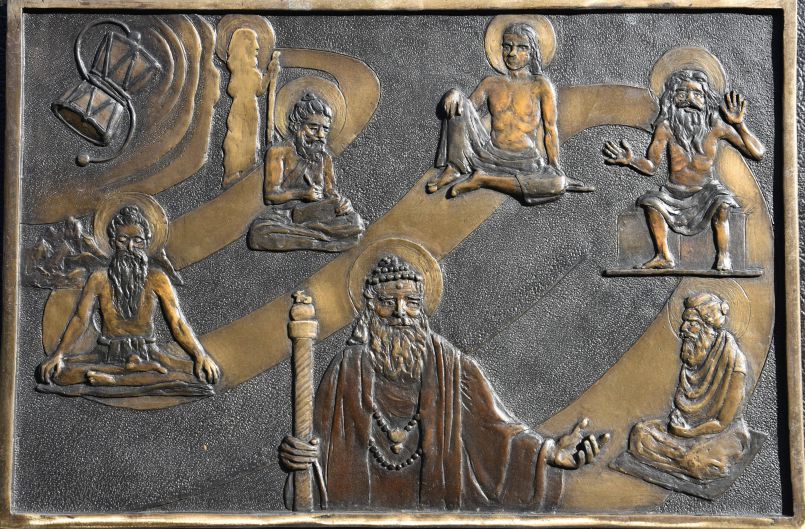Iraivan Temple Samvatsara Puja Video Compilation, April 11-12, 2024
A devotee took a number of portrait-mode clips during the two days of first anniversary festival events, and we have compiled them here. The monthly morning Krittika Homa happened to fall on the first day of the anniversary pujas, so clips of that are shown first. The first evening of the Samvatsara Puja is when Kauai faced torrential rains and floods, so that is captured in some of the clips.
Photos of Our 2024 Samvatsara Puja

Aum Namah Sivaya
Here are some more photos of our recent Samvatsara Puja for Iraivan Temple. This two-day annual event is performed for the temple each year that follows its consecration. Photos by Rajkumar Manickam
Iraivan Temple Samvatsara Puja Live Updates
Iraivan Temple First Anniversary Puja Preparations

Preparations have been in full swing for Iraivan Temple's first anniversary pujas on April 11-12. From husking coconuts for kumbhas, to securing tents, to installing sitting platforms, a temporary homa kunda and hanging tombai decorations, these photos show a small portion of the details involved to get ready.
Piping Continues, and Preparations for Iraivan Anniversary
Trenching for water piping and optical fiber continued from the San Marga parking lot corner down the pasture slope and to the edge of our water ditch winding through our property and feeding the ponds. The second photo shows the ditch, and Pradip, our contractor, is going to dig a tunnel underneath the ditch to sending the piping through. Then he will continue trenching parallel to the San Marga Path.
The third photo shows a just-painted pyramid structure that will hold about 130 small kumbhas for the first annual Iraivan Temple anniversary pujas on April 11-12. More preparatory photos will come soon.
Dancing for Siva

It is said the greatest offering to God Siva is our love and gratitude, both of which are embedded in the traditional Bharatanatyam dance, offered for thousands of years in Hindu temples (with about 90 years hiatus when the British colonials banned it). Kadavul Temple and devotees were blessed to have such an offering, performed by Fenulla Jiwani during the alankara. She shopped at the Kapaa Farmers' Market the following day and prepared an Italian pasta dish and fresh salad for the monks.
One of the unique features of her dance is this: the last time she performed it in public was 23 years ago. And she still soared. Enjoy the short slideshow.
Monthly Krittika Puja at Iraivan Temple

Here are a few photos of last week's Krittika Puja (the final portion) taken by taskforcer Rajen Manick, with a few pilgrims attending.
Happy Mahasivaratri!

Iraivan Temple celebrated Mahasivaratri for the very first time on March 7th evening into the next morning.
From Dancing with Siva--
"Mahivartri is the night before the new-moon day in February-March. We observe it both as a discipline and a festivity, keeping a strict fast and all-night vigil, meditating, intoning iva's 1,008 names, singing His praise, chanting r Rudram, bathing the ivaliga and being near thevairgsas they strive to realize Paraiva."
We began with singing by devotees, then chanting Sri Rudram, followed by Satguru's upadesha on spiritual unfoldment through the four purusharthas, goals of life. The Pravin Kumar Gurukal performed homa, followed by the first kala abhishekam which ended about midnight.
After midnight, Gurukal continued with three more kala abhishekams, decorating Mahalingesvara sphatikalinga in a different manner each time, ending around 5am.
Iraivan Bronze Bas-Relief Panels

Recently the massive project of creating and installing 35 bronze panels around Iraivan Temple's perimeter wall was completed. Each Panel measures 14" by 47" and encapsulate a distilled library of information for future pilgrims. They include the history of the temple, from vision to chisel; the founder and architect; the simple technology used; the story of Mahalingeshvara; the monastery and its Satguru and monks; the philosophy of Saiva Siddhanta represented by the temple; the scriptures and beliefs in multiple languages, and more.
On many of the panels you'll find a bas-relief, sculpted by Holy Young, and later cast in metal. Rajen Manick was asked to photograph the panels for our digital archival use. Here are his first batch of photos.
Iraivan Perimeter Wall Final Three Panels Installed
A long project full of love and thoughtful effort has come to a close. A team from Pacific Concrete, Cutting & Coring came up some days ago to install the final three metal panels on the perimeter wall of Iraivan Temple. They are:
#7-- The Panchabrahma Mantra
#27-- A Saiva Siddhanta Creed in Sanskrit
#30-- Verses From the Vedas
The panels gleam in the afternoon sun today. Another stage of the temple structure is complete. Aum Namasivaya.
From Our Gurus' Teachings
Archives are now available through 2001. Light colored days have no posts. 1998-2001 coming later.
